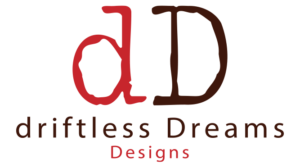
A visually appealing website is essential for a company as it creates a positive first impression, enhances credibility, improves user experience, and effectively communicates the brand’s identity and offerings, ultimately contributing to its online success.

Website Design
What do you think of the website you are currently using?
At Driftless Dreams Designs, we specialize in web design services, a perfect example is the site you’re currently using! While this website serves as a primary demonstration of our capabilities, our expertise extends far beyond. We offer tailored solutions to meet your unique needs and objectives, whether it’s revamping your online presence, creating a captivating website for starting your company, or enhancing user experience. Let’s transform your digital footprint into something extraordinary.
learn why your website should look great!
A well-designed website is essential for small businesses as it serves as a virtual storefront, presenting professionalism and reliability to potential customers. It acts as a central hub for showcasing products or services, enabling businesses to communicate their brand identity, values, and unique selling points effectively. Furthermore, the website provides avenues for customer interaction and feedback, fostering relationships and enhancing customer satisfaction. In essence, a well-designed website is a powerful tool for small businesses, playing a pivotal role in establishing credibility, attracting customers, and driving growth in the digital age.
Our website design Process
- Understanding Client Needs:
This involves thorough discussions with the client to grasp their goals, target audience, brand identity, and any specific requirements or preferences they may have for the website. It’s essential to align the design with the client’s overall vision and objectives. - Visual Design:
This stage focuses on the creation of the website’s visual elements, such as the overall look and feel, color schemes, typography, and imagery. The designer aims to craft a design that not only reflects the client’s brand identity but also appeals to the target audience and enhances user experience. - Wireframing and Prototyping:
Wireframing involves sketching out the basic layout and structure of the website, including the placement of key elements like navigation menus, content sections, and calls to action. Prototyping then takes these wireframes a step further by creating interactive mockups that demonstrate how the website will function and flow. This helps identify any usability issues early in the design process. - Responsive Design:
With the increasing use of mobile devices, it’s crucial for websites to be responsive and adapt seamlessly to different screen sizes and devices. The designer ensures that the design elements and layout are flexible and fluid, allowing for optimal viewing and interaction across desktops, laptops, tablets, and smartphones. - Testing and Feedback: Usability testing involves gathering feedback from users to evaluate the effectiveness and usability of the design. This may include conducting user testing sessions, collecting feedback through surveys or questionnaires, and analyzing user behavior metrics. Based on the feedback received, the designer iterates on the design to address any issues or areas for improvement.
- Finalizing Design Assets:
Once the design has been refined and finalized, the designer prepares the necessary design assets for handoff to the development team. This includes providing high-fidelity mockups, style guides, and design specifications to ensure a smooth transition from design to development.
